The Czech Republic has four national parks. Here is detailed information about the four main national parks in the Czech Republic, including their size in hectares and year of establishment:

Šumava National Park (Národní park Šumava)
- Year of establishment: 1991
- Size: approximately 69,030 hectares
Šumava National Park, known as Národní park Šumava in Czech, was established in 1991 and is one of the largest and most significant protected areas in the Czech Republic. Located in the southwestern part of the country, along the border with Germany and Austria, it covers an expansive area of approximately 69,030 hectares, making it the largest national park in the Czech Republic.
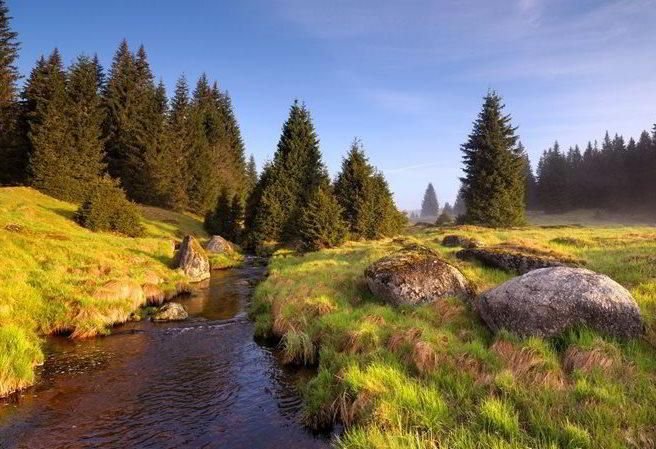
The park is part of the larger Bohemian Forest (Šumava), a low mountain range that forms a natural border between the Czech Republic, Germany, and Austria. This region is characterized by its dense forests, peat bogs, glacial lakes, and meadows, creating a diverse and rich ecosystem. The varied landscapes of Šumava National Park provide habitats for numerous plant and animal species, many of which are rare or endangered.
One of the most striking features of Šumava National Park is its extensive forested areas, which include some of the oldest and most pristine forests in Central Europe. These forests are home to a variety of wildlife, including lynx, otters, red deer, and a plethora of bird species. The park is also a haven for botanists, with a wide range of plant species, including several that are endemic to the area.
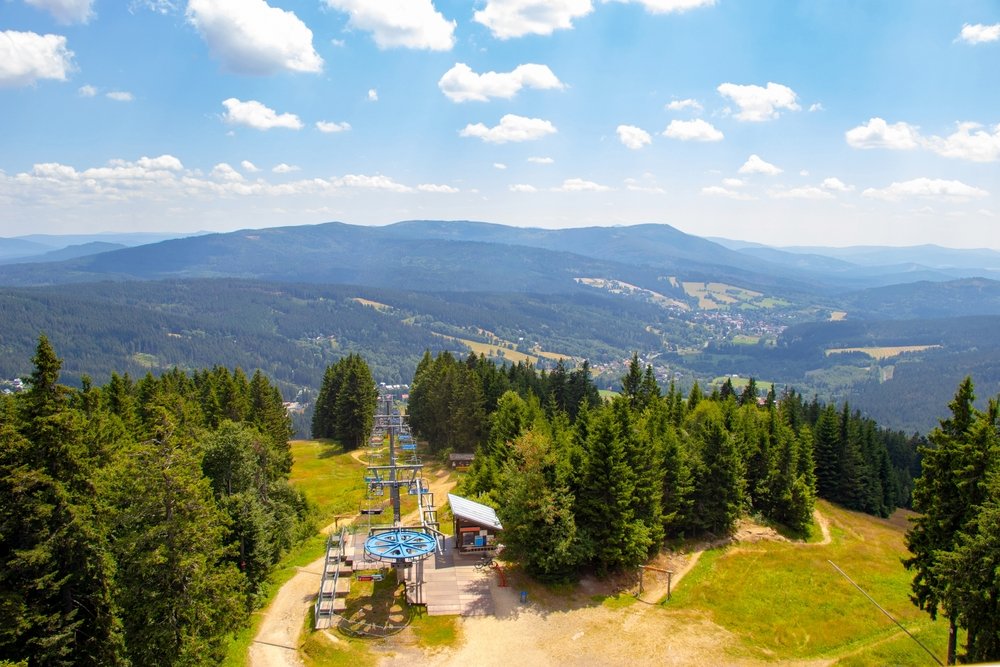
Šumava National Park is renowned for its picturesque and tranquil glacial lakes, such as Lake Plešné, Lake Prášilské, and Lake Laka. These lakes, formed during the last Ice Age, are nestled amidst lush forests and provide stunning views and peaceful settings for visitors. The park’s peat bogs, which are some of the most extensive in Europe, add to the unique biodiversity and are important for climate regulation and water retention.
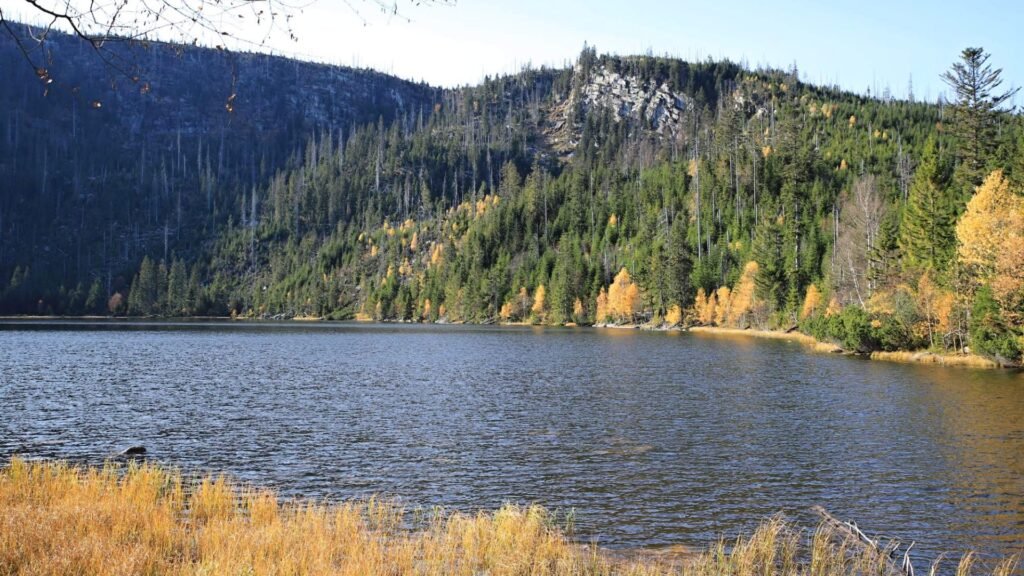
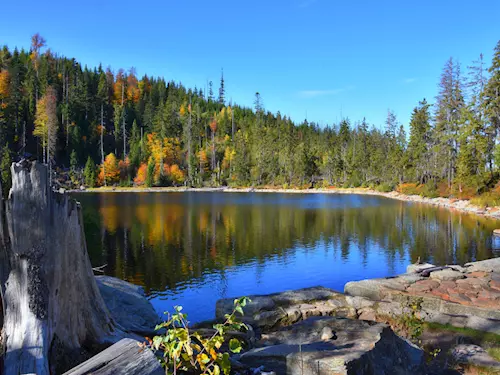
The park offers numerous recreational opportunities for nature lovers and outdoor enthusiasts. There is a well-developed network of hiking and biking trails that traverse the park, allowing visitors to explore its natural beauty up close. In winter, Šumava becomes a popular destination for cross-country skiing, with many trails groomed for this activity. Canoeing and fishing are also popular in the park’s rivers and lakes.
Šumava National Park is also rich in cultural and historical heritage. Scattered throughout the park are remnants of ancient settlements, medieval castles, and traditional wooden houses, reflecting the region’s long history of human habitation. The park authorities are committed to preserving these cultural sites while promoting sustainable tourism and environmental education
Krkonoše National Park (Krkonošský národní park)
- Year of establishment: 1963
- Size: approximately 36,300 hectares
Krkonošski National Park (Krkonošský národní park), established in 1963, is one of the oldest and most visited national parks in the Czech Republic. Located in the northern part of the country, it stretches along the border with Poland and encompasses the Krkonoše Mountains, including the highest peak in the Czech Republic, Sněžka, which rises to 1,603 meters above sea level. The park covers an area of approximately 36,300 hectares.
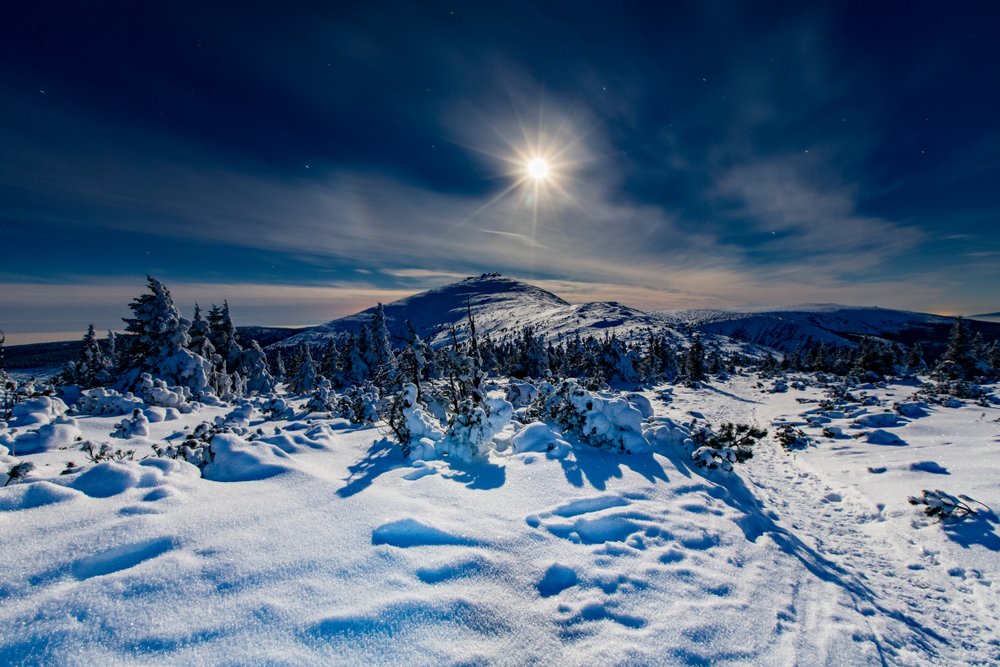
Krkonošski National Park is renowned for its diverse and unique ecosystems, including alpine meadows, peat bogs, and extensive forests. The park is home to a wide variety of flora and fauna, some of which are endemic to the region. Notable plant species include the Krkonoše endemic species like the Bohemian bellflower, while wildlife includes animals such as the lynx, red deer, and various species of birds and butterflies.
The park offers numerous opportunities for outdoor activities, making it a popular destination for tourists year-round. In the winter, it is a major hub for skiing and snowboarding, with well-maintained trails and facilities. During the summer months, visitors can enjoy hiking, mountain biking, and rock climbing on the extensive network of trails that offer breathtaking views of the mountainous landscape.
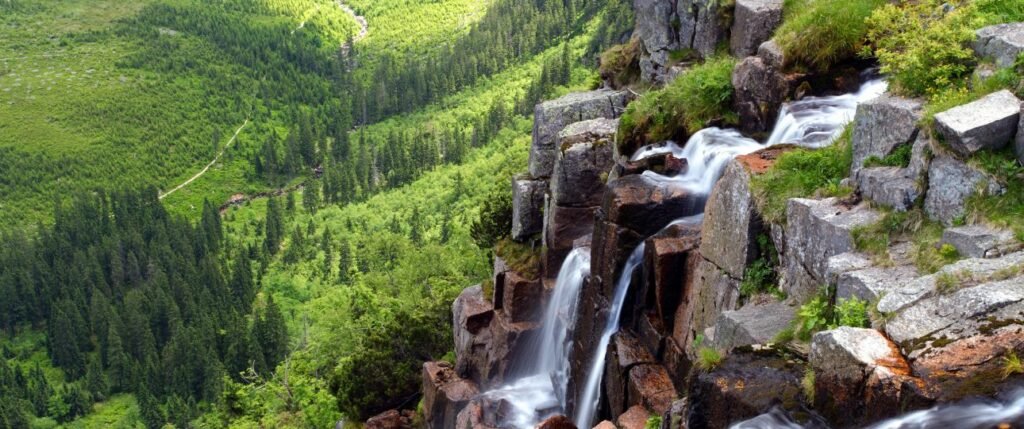
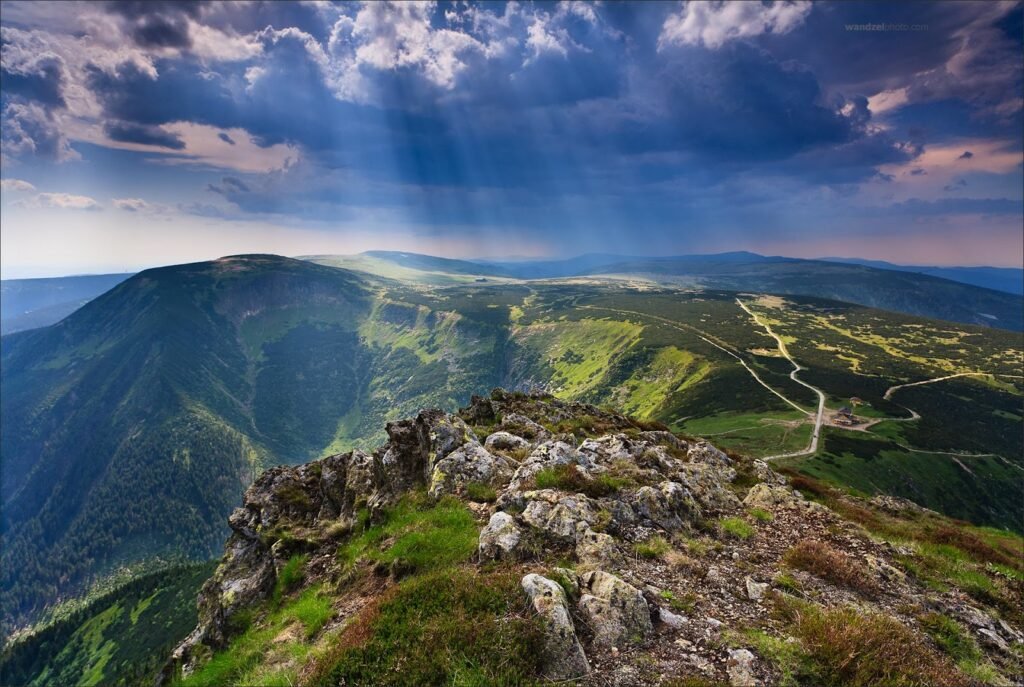
Podyjí National Park (Národní park Podyjí)
- Year of establishment: 1991
- Size: approximately 6,300 hectares
Podyjí National Park (Národní park Podyjí) is one of the four national parks in the Czech Republic, established in 1991. Located in the southeastern part of the country, near the border with Austria, the park covers an area of approximately 6,300 hectares. It is the smallest of the Czech national parks but is characterized by remarkable landscape and biological diversity.
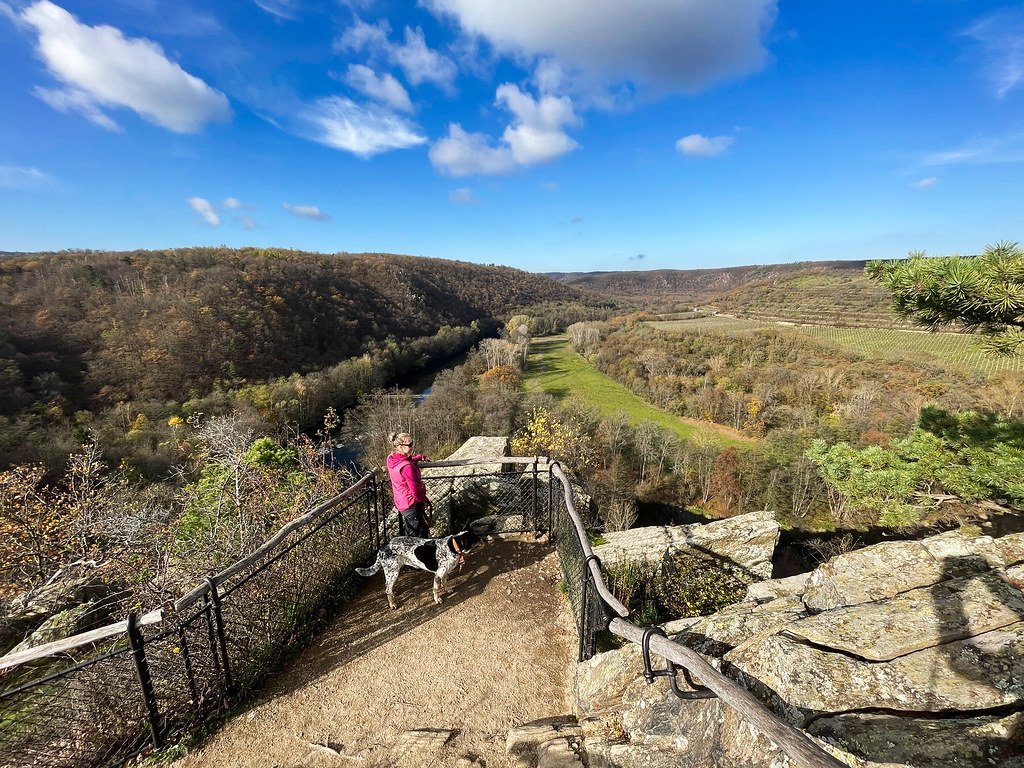
The main attraction of Podyjí National Park is the Dyje (Thaya) River, which meanders through the park, creating picturesque canyons and valleys. The river carves a deep gorge in the limestone and granite rocks, creating dramatic views and diverse ecosystems. The riverbanks are covered with lush forests that provide habitat for many species of plants and animals.
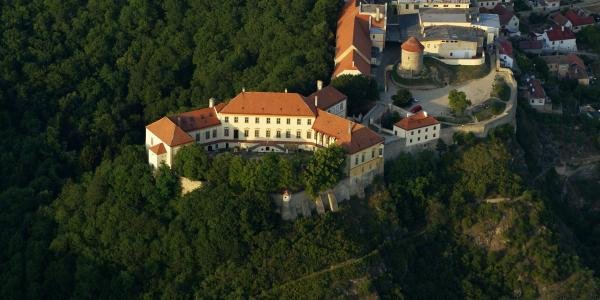
One of the most well-known places in the park is Znojmo Castle (Znojemský hrad), located on the edge of the park, overlooking the Dyje River. The castle and its surroundings offer splendid panoramas and are a popular destination for tourists and history enthusiasts.
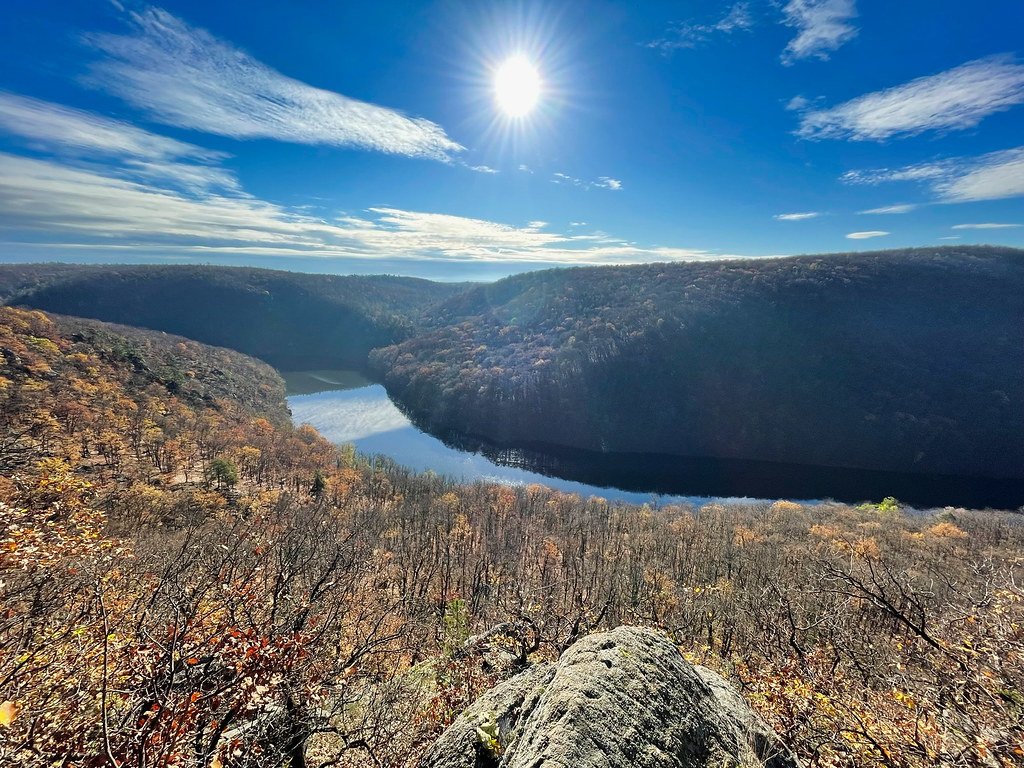
Podyjí National Park is home to many rare and protected species of plants and animals. The park boasts rich flora, including numerous orchid species, and fauna such as lynxes, deer, badgers, and various bird species. The park is also an important habitat for many bat species that find shelter in numerous caves and old buildings within the area.
Hiking and cycling trails are well-developed in Podyjí National Park, allowing visitors to explore its natural and cultural treasures. These trails lead through diverse landscapes, from forests and meadows to rocky hills and the valleys of the Dyje River. The park also offers many viewpoints where one can admire scenic views of the surroundings.
Bohemian Switzerland National Park (Národní park České Švýcarsko)
- Year of establishment: 2000
- Size: approximately 7,900 hectares
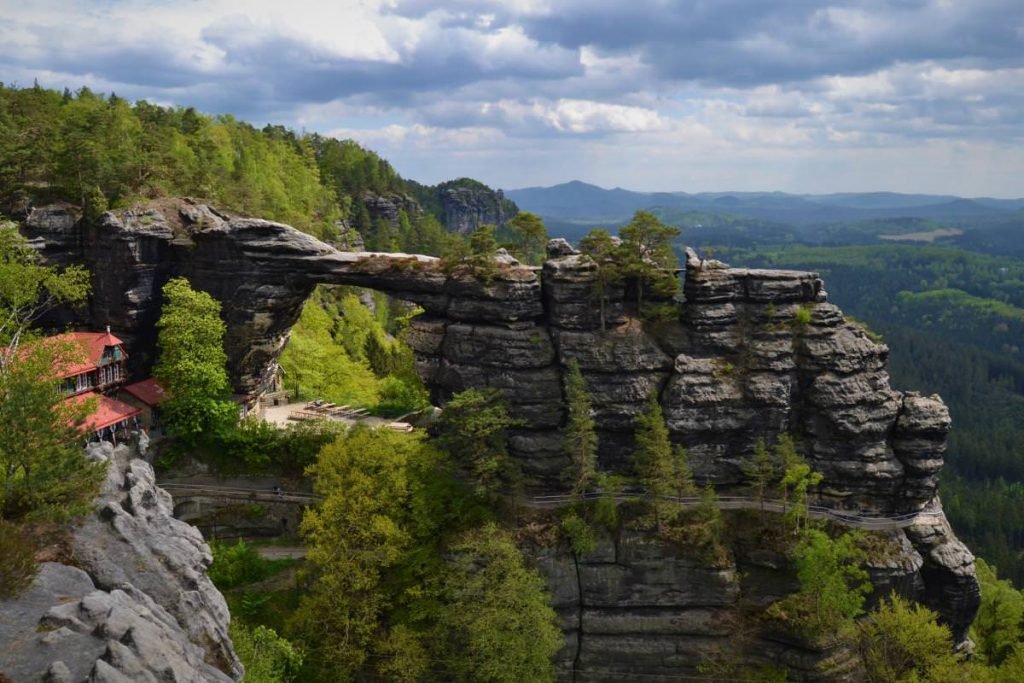
Bohemian Switzerland National Park (Národní park České Švýcarsko) is one of the most captivating natural areas in the Czech Republic, established in 2000. Located in the northwest part of the country near the border with Germany, the park covers an area of approximately 7,900 hectares. It is renowned for its stunning sandstone formations, deep gorges, and lush forests.
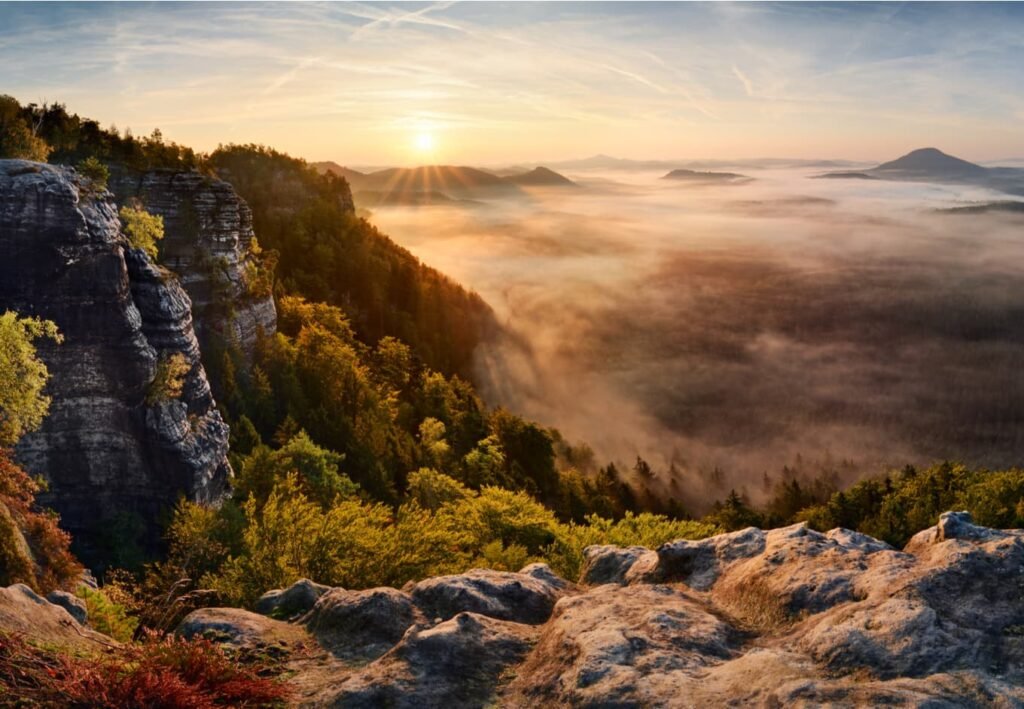
Key Features of Bohemian Switzerland National Park:
- Sandstone formations:
- The park is famous for its unique sandstone formations, shaped over millions of years by the forces of nature. One of the most iconic landmarks is Pravčická brána, the largest natural sandstone arch in Europe. This impressive formation offers breathtaking views and serves as a symbol of the park.
Elbe River gorge:
- The Elbe River meanders through the park, creating a deep and picturesque gorge. The riverbanks are lined with high sandstone cliffs and dense forests, providing a dramatic backdrop for visitors exploring this area.
Hiking and climbing:
- Bohemian Switzerland is a paradise for hikers and climbers. The park offers an extensive network of well-marked trails leading through diverse landscapes, including rocky plateaus, forested valleys, and river canyons. Popular trails include Gabriela’s Trail, which offers stunning views of the Elbe River and surrounding rock formations.

Attractions and Activities:
- Boat trips on the River Kamenice:
Visitors can enjoy tranquil boat trips on the River Kamenice, navigating narrow gorges and tunnels carved into the rock by the flowing river.
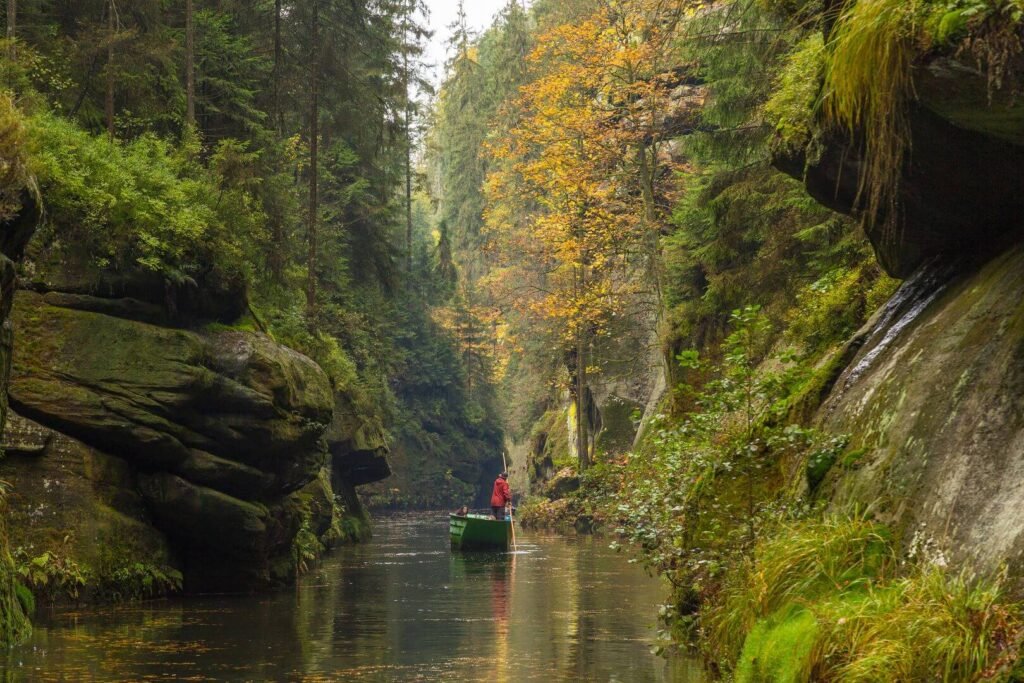
- Cycling:
The park offers numerous cycling paths that traverse scenic landscapes, providing an excellent way to explore the area on two wheels.

